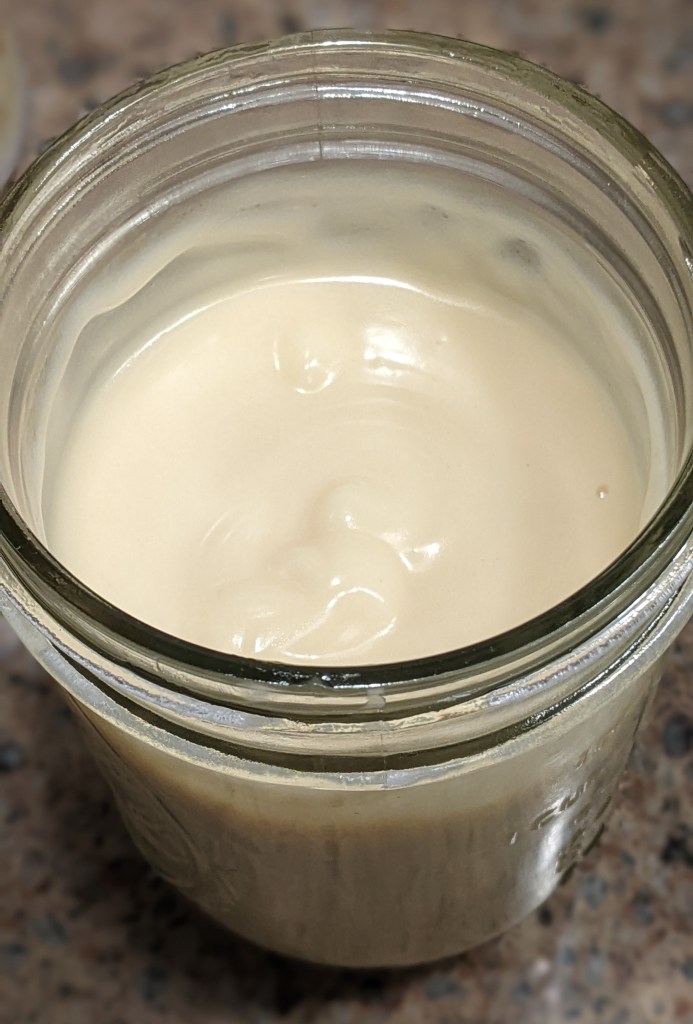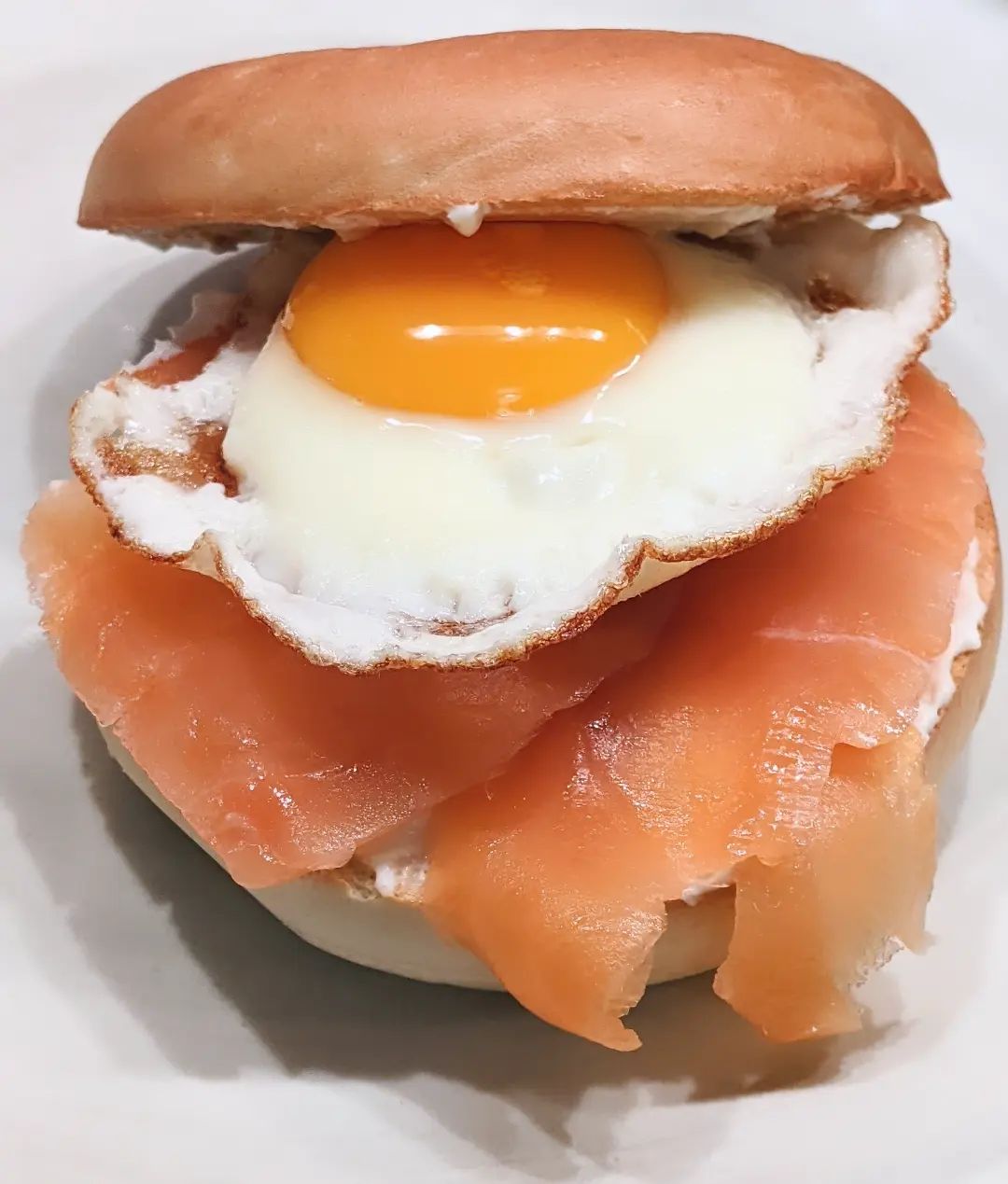This is the first time talking about the gastritis diet (and my own erosive gastritis diagnosis) on this blog so I’ve given a little overview here; feel free to scroll straight down to the recipe as desired. Gastritis – the inflammation and potential erosion of the stomach lining and an array of associated symptoms – is also explained in more detail, in case you think you might have it, or you are just learning. Ongoing acid reflux and other digestive ailments should always be investigated by your doctor.
One key aspect of the Gastritis Diet is to avoid acidic foods, from any and all citrus, to tomatoes and related products, coffe, brown tea and wine, to anything with vinegar, and more. These foods will exacerbate the problem for almost everyone suffering from this condition.
Fermented foods are sometimes recommended; but in my case, I have been very sensitive to acidic foods so currently mostly avoid them. (You can imagine that’s really tough for the guy who started a blog, created a Facebook fermentation group of over 40k members, and wrote two cookbooks dedicated to pickles, kimchi, fermented hot sauce and the like.)
Kombucha, which I used to make myself often, is bubbly and sour, and doesn’t fly at all for me either, even though I see some sites recommend it for gastritis. I consider this a risky move.
But basically, so many of the foods I have been insane about eating, posting, and sharing here for years are off-limits to me right now. It’s super annoying but I am really hoping that a break from those foods for a few months will allow me to heal up to where I can go back to eating them in moderation. It’s completely possible to heal many forms of chronic gastritis, but for most it takes a long time and discipline.
One thing to note is that pickled and spicy foods, and really your diet in general, don’t directly cause gastritis. Believe it or not, this is widely agreed upon in the medical community. It can be caused from stress, physical factors like radiation therapy, from alcohol or smoking, immune conditions, some medications, and other reasons. A really common one is a bacteria called H. Pylori but this has a course of treatment that usually solves the gastritis pretty quickly. But once chronic gastritis is in place, the foods you choose will tend to either exacerbate the symptoms, or not. Some foods are even thought to play a healing role.
Certainly the less processed and more nutritious the food, the better outcomes to expect, so I’m here today to share an amazing acid-free, gastritis-friendly dressing that has made eating salads possible again for me!
One food that everyone can agree is super healthy, and allows for limitless variations on, is salad. I also just love it, you know, with a really good dressing. Add in some heavy hitters like avocado and tuna, grilled chicken, or shrimp, and suddenly you have a filling meal perfect for this diet!
This all assumes you’re using veggies that are agreeable to you and the lettuces you choose, if any, are okay. many with gastritis have raw vegetable and lettuce sensitivities and this needs to be considered. Eating only cooked vegetables for the first 90 days of any gastritis diet is strongly recommended! In my case, raw carrots really caused my gut to burn (as well as other things you wouldn’t expect like dates and bananas). Others have told me cucumbers were a huge problem, but these are great for me. In short, just because it’s a healthy non-acidic fruit or veggie, doesn’t mean you can necessarily eat it raw and be okay.
Practitioners of the Gastritis Healing Book diet are directed to cook all veggies for the first 90 days. Nonetheless, cooked veggies can be allowed to cool and used for a delicious salad, so don’t rule out your ability to have salad even if raw veggies aren’t your thing now.
So I figured salad could be an easy way to eat well and supply easier, unprocessed foods to digest. Except for that dang dressing conundrum! Seriously, have you noticed that every dressing has some serious acid in it? Whether it’s balsamic vinegar, white wine vinegar, citric acid, etc., there was nothing for me. And what good is a salad without dressing!?
Enter my acid-free Green Goddess Dressing.

First, I made my paleo mayonnaise I’ve had on this site for years but without the lemon juice (and I reduced the salt). You can use my recipe and just omit the lemon part. As the recipe says, you can use avocado oil or light olive. On its own, this mayo is not the tastiest. There’s no acid but also no sugar, no garlic, really nothing that makes mayo good (lol). Don’t worry, it’s just part of the base of this delicious dressing and I offer alternatives below.
Having this mayo on hand also will enable you to make other acid-free versions of otherwise good foods for the gastritis diet, such as egg salad, tuna salad, chicken salad, to add on whole-wheat or gluten free sandwiches, and more. When mixed with the other ingredients, in spite of the criticism, this mayo will do what mayo always does – give some creaminess for dry foods, and add depth of flavor.

Can’t make your own mayo?
It’s easy to make your own gastritis mayo (almost any recipe will do, minus the lemon or vinegar and other problem ingredients such as mustard powder or black pepper), but if that’s not an option or you just don’t feel like it, you can sub for low-fat or fat-free sour cream or yogurt, or even a plant-based dairy-free sour cream. Most dairy is discouraged or eliminated on the Gastritis Diet, but mild, low-fat white cheeses are okay in moderation according to many versions of the diet, if tolerated well, and low-fat or fat-free sour cream and low-acid yogurt are definitely counted among these (as well as cottage cheese, ricotta, Goat’s milk, low-acid kefir, and some others). (To be clear, the popular Gastritis Healing Book says “dairy isn’t recommended” but there is limited discussion of the matter and many sources, such as the Acid Watcher Diet, indicate it’s fine in moderation if it isn’t triggering of symptoms, especially after the initial “Healing Phase” of the diet.
To the acid-free mayo (or whichever sub you use), I added tahini (sesame paste), and organic apple juice to serve as the acid substitute. It balances the other flavors and adds a certain tartness, but doesn’t hurt my stomach. Choose a mild apple juice; for example, a special Granny Smith variety wouldn’t be a good choice. Again, apple juice doesn’t work for some, in which case coconut water is a pH-friendly substitute.
Lastly, I added a pinch of salt and A LOT of different fresh herbs from my garden. Although apple juice is in fact acidic, it is not considered a high-acid fruit like citrus; it’s allowed on various iterations of the gastritis diet. That said, all of this should be based on your personal preferences as well as food tolerances.
Even with the modified ingredients, I don’t go crazy using this stuff. If you’ve made oil-based mayo and added tahini, it has plenty of fats which can pose their own digestion issues. For one salad, I add about 2 TBSP (which is a standard serving size of dressing anyway), mix it in thoroughly, and have zero issues. If anything, my stomach feels relieved after these meals. A little goes a long way and is world’s better than a salad with no dressing.
I also love this dressing as a veggie dip, and in lieu of no hot sauce, I’ve loved it as a dip for my grilled chicken, fish, and shrimp. Use lots of cilantro for the herbs and it can fill in for chimichurri on some lean steak too if your stomach is good with that. It was awesome on my modified gastritis-friendly tacos using my AIP-Paleo tortilla recipe. (There’s plenty of other non-corn, non-gluten tortilla recipes out there more basic than mine too.)
With no further ado, let’s have at that recipe, shall we?
Shelf life:
Due to the low salt levels and lack of acids, there isn’t much to preserve this food. Keep it tightly sealed in the fridge and it will be good for 7-10 days.
Yield:
Makes about 5-6 fl. oz. (about 5 salads)
Equipment:
- If making the mayo: electric hand mixer with one whisk attached, and 8 oz. mason jar or similar (jar shallow enough for a single hand mixer whisk to reach the bottom)
- Measuring cups & spoons
- Medium mixing bowl
- Whisk
- Suggested: small food process/blender (the smallest in this set is great)
- Storage bottle or container
- Bottling funnel as needed
Ingredients:
- For AIP + Gastritis Compliant: 1/2 cup acid-free mayo (use any recipe, omit the acid like lemon or vinegar, garlic, and any problem ingredients). Or use 1/2 cup plant-based plain yogurt (should be AIP compliant)
- If not AIP: Can sub 1/2 cup lowfat / nonfat sour cream. Limited dairy is permitted on most gastritis diets (dairy is discouraged according to the Gastritis Healing Book but in such limited doses is acceptable).
- 1/2 cup coconut water; can sub with 100% pure organic apple juice for more acidity; not recommended in first 90 days of gastritis diet
- 1/4 cup pure tahini (sesame paste), room temp and stirred well
- Lots of chopped soft herbs, e.g. basil, dill, cilantro, tarragon, parsley, etc.) – in the featured photo I used about 8 stalks of dill, 5-6 large basil leaves, numerous parsley leaves, some oregano and tarragon. Note that mint, esp. raw, can be highly inflammatory to some with gastritis, although I have never experienced that personally
- As desired: 1/4 tsp salt or to taste
- Optional: for a more umami kick, you can add 1/4 tsp sesame oil and 1 TBSP coconut aminos, and/or even 1/4 to 1/2 tsp anchovy paste
Directions:
1.) If making the acid-free mayo, complete that step first. Place the mayo (or sub with the low-fat / non-fat plain sour cream or yogurt) in the mixing bowl. Add the tahini, apple juice (or coconut water), and other optional ingredients. Whisk thoroughly until mix is smooth and creamy. Transfer to small blender. (If no blender is an option, the herbs cam simply be minced well with a knife; the texture of the dressing isn’t so smooth but will otherwise give a comparable product.)

2.) To the mix in the blender / processor, add the herbs. Blend on high for 1-2 minutes. Even if the dressing is somewhat fluid at this point, note the tahini will stiffen in the refrigerator. You may want to even add a couple more TBSP apple juice just to be on the safe side, even though the dressing will seem fluid enough at this stage. For a thicker dressing, just leave it as it is.

3.) As desired, transfer the dressing to a storage bottle or 6 fl. oz. squeeze bottle using a bottling funnel. Otherwise store in a small tupperware type container.

















Please send me the gastric diet,going to make this salad dressing Thank you.
Yes, this dressing is perfect for those suffering from mild to moderate gastritis or GERD